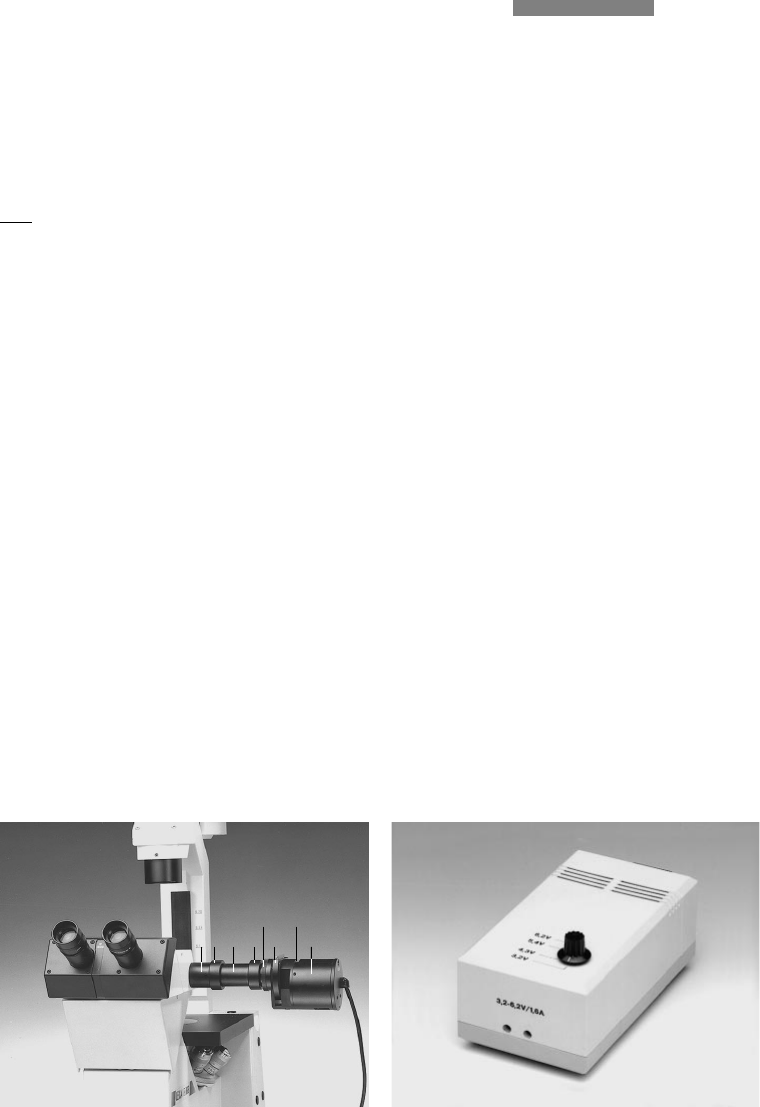
91
Viewed with a 10x eyepiece, this intermediate
image of 0.1x gives a total magnification of 1x in
the microscope eyepiece (0.1 x 10 = 1x).
The total magnification of the film plane of a
camera is derived from multiplying the inter-
mediate image magnification M
1
by the
magnifications of the photo eyepiece and
camera attachment, e. g.:
intermediate image magnification 0.1x
photo projection lens 10x
camera factor 35 mm 0.32x
0.1 x 10x1.32 =0.32x
The total magnification at the 35 mm camera of
the ORTHOMAT
®
E is therefore 0.32x.
Fig.␣ 74␣
Slide overlay on the FSA 25 PE tube (with tube adapter)
1 Tube flange, 2 Coupling ring of reflection optics, 3 Reflection
optics, 4 Coupling ring of slide overlay device, 5 Knurled
focusing ring, 6 5 x 5 cm slide holder, 7 Filter slot, 8 Illumina-
tion adapter of lamphousing
Fig.␣ 75␣ ␣ Transformer
1 3 8
2 4 6
7
5
The total magnification in the microscope, the
reproduction ratio on the photograph or TV
image can be quickly and easily measured with
a scale and calculated.
n.b.: For normal viewing without the macro
mirrorhousing or macrodual zoom, put on the
cover to avoid disturbing overlay effects.
The mirror housing (73.11) can be rotated
through 360°, for example to alter the angle at
which the photograph is taken. This is done by
loosening the Allen screw.
The intermediate image magnification M
1
of the
macro object can be worked out from the
eyepiece field of view and the diameter of the
object field (measured with a graduated ruler)
as follows:
M
1
=
field of view Ø
z.B.
10x/20 eyepiece
M
1
= –––––––––––– e. g. –––––––––––––––––– M = 0.1
M
1
=
object field Ø
M
1
=
object field
= 200 mm


















